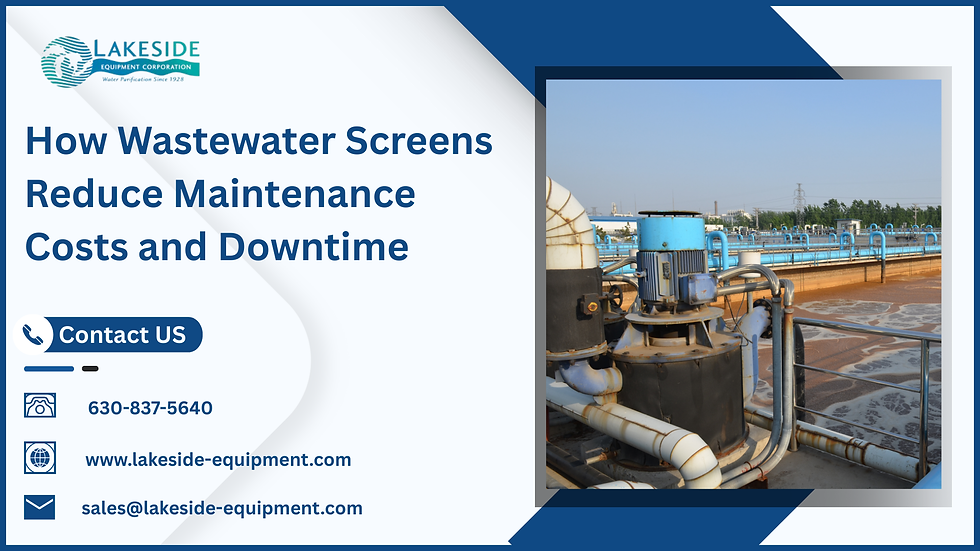Wastewater Treatment: What Indispensable Things Are Required For Making It Smooth-going
- lakesideequipment

- Apr 25, 2024
- 2 min read
The journey of wastewater treatment is a complex one, with various stages working together to return water to a safe and environmentally friendly state. While processes like biological treatment and disinfection receive much of the spotlight, the initial steps play a crucial role in ensuring smooth operation throughout the plant. Here's where wastewater screens come in – the unsung heroes of wastewater treatment.
Imagine a river flowing into a treatment facility. This influent, as it's called, carries not just water but also a variety of debris – rags, plastics, sticks, and other solid materials. These large objects can wreak havoc downstream, clogging pumps, damaging equipment, and disrupting the delicate biological processes that purify the water. Wastewater screens act as the first line of defense, removing these large solids before they can cause problems. This protects vital equipment, ensures efficient wastewater treatment processes, and ultimately contributes to cleaner effluent being discharged back into the environment.
Types of Wastewater Screens: Size Matters
Wastewater screens come in various configurations, each suited to capturing solids of different sizes. Here's a breakdown of the three main types:
Coarse Screens (Bar Screens): These are the workhorses of screening, typically featuring parallel bars spaced between 6mm and 150mm apart. They effectively remove large debris like rags, branches, and bulky items that could damage pumps or clog pipes. Coarse screens can be manually or mechanically cleaned, with the latter employing raking or rotating mechanisms to remove captured solids.
Fine Screens: As the name suggests, fine screens target smaller solids. They have openings ranging from 1.5mm to 6mm and utilize fine mesh, wedge wire, or perforated plates for filtration. Fine screens are often used in conjunction with coarse screens or in situations where finer solids might disrupt downstream processes like biological treatment. They typically require mechanized cleaning systems due to the finer mesh filtering out more material.

Micro Screens: These are the most sophisticated of the bunch, designed to remove extremely small particles down to 50 microns (about the width of a human hair). Micro screens are mainly used in advanced treatment applications or specific industrial wastewater treatment processes.
Choosing the Right Screen
Selecting the appropriate wastewater screen depends on several factors, including:
Influent characteristics: The size and type of solids present in the influent wastewater will determine the required screen size. Facilities receiving industrial wastewater with higher solid content might require a combination of coarse and fine screens for effective removal.
Flow rate: The volume of wastewater entering the treatment plant dictates the screen's capacity. Screens are designed to handle specific flow rates, and exceeding that capacity can lead to inefficiency or bypass of solids.
Treatment requirements: The overall treatment process design influences screen selection. For instance, if a facility utilizes sensitive biological treatment methods, finer screens might be necessary to remove solids that could hinder these processes.
Wastewater screens are the silent guardians of wastewater treatment plants. Their role in protecting downstream processes and ensuring efficient wastewater treatment is undeniable. By understanding the different types of screens, their selection criteria, and proper maintenance practices, we can ensure these screens continue to function effectively, contributing to cleaner water and a healthier environment.




Comments